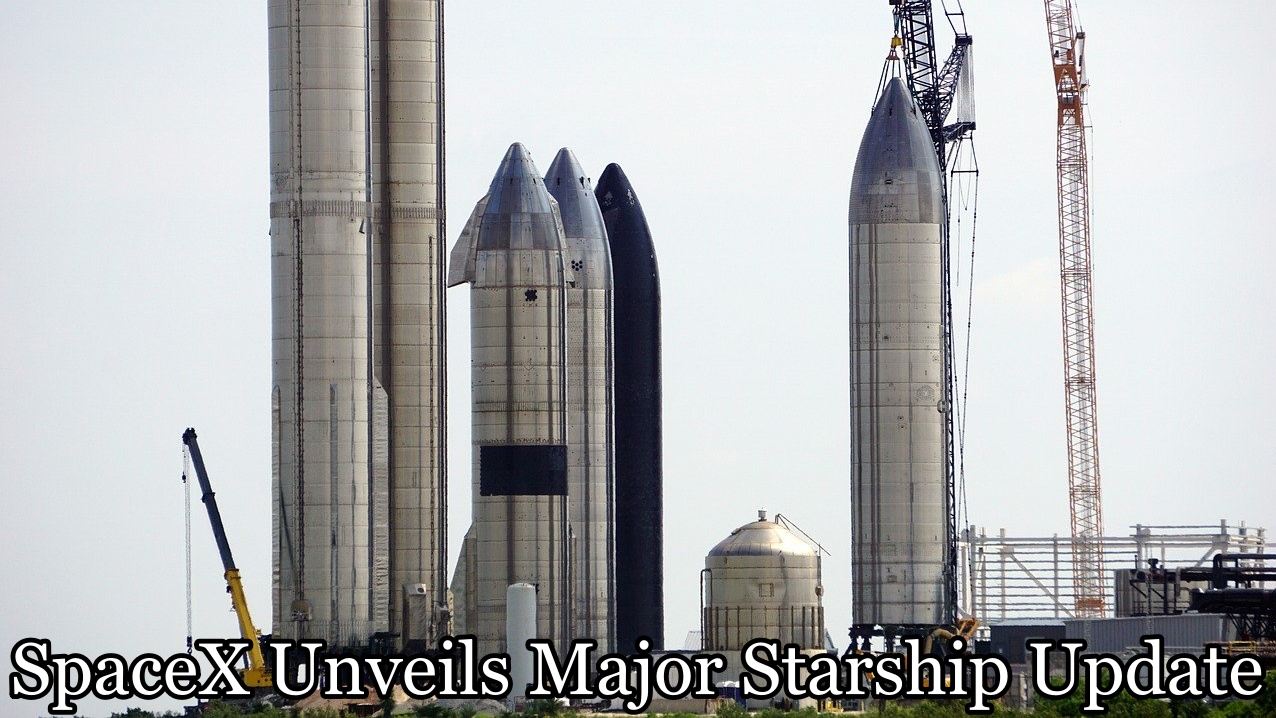SpaceX has capped off a monumental year for Starship development with some major milestones, including the successful static fire test of its new Block 2 Starship Upper Stage.
As SpaceX gears up for Flight Number 7, let’s dive into what we can expect from this exciting launch, alongside updates from Blue Origin and a fascinating new discovery from the James Webb Space Telescope that could reshape our understanding of the universe.
SpaceX Starship Update: The Countdown to Flight 7
After an impressive year of development and test flights, SpaceX is now preparing for the much-anticipated Flight Number 7 of its Starship program. This marks a crucial step forward as the upper stage Block 2 Starship prepares for its maiden voyage.
When Will the Next Starship Launch Happen?
According to intel from NASA and the FAA, the next launch window is set to open on January 11th, 2025. This would mark the beginning of a new phase for SpaceX, as it continues to test and refine its Starship system. Flight Number 7 will feature the Block 2 Starship, a version that is taller and capable of carrying more propellant, making it a significant improvement over previous iterations.
Expect early morning launches, with NASA using a specially equipped jet to capture thermal imagery of the Starship upper stage as it re-enters Earth’s atmosphere. This will help scientists study the re-entry heat and refine landing procedures. The mission is expected to happen in total darkness, which is why the aircraft performing the thermal imaging will have to fly with all lights switched off, as NASA has filed for an FAA exemption to ensure the optimal conditions for imaging.
What to Expect from Flight 7
For Flight Number 7, the main focus will be on landing performance. Elon Musk has stated that if the flight has a successful landing on water, the next mission (Flight 8) will attempt the much-awaited launch tower catch—similar to what was done with the Super Heavy booster in October 2024. This time, the Starship will return from a higher altitude and land over land rather than water.

What sets this flight apart is the new forward flap design on the Block 2 Starship. Musk has previously mentioned that the old flap design was problematic, with too much weight and an inefficient aerodynamic setup. The improved aerodynamics combined with a new heat shield are expected to significantly boost the vehicle’s performance.
Block 2 Starship’s New Design Features
The updated heat shield on the Block 2 Starship includes ablative tiles that are more effective and a secondary ablative layer for additional protection. These improvements aim to reduce the heat and stress during re-entry, ensuring that Flight Number 7 delivers better results than previous missions.
The key goal for Flight 7 will be a successful landing and recovery of the Starship in one piece, setting the stage for the Flight 8 tower catch attempt.
Blue Origin’s New Glenn: A Potential Game-Changer for Spaceflight
Meanwhile, over at Blue Origin, there’s been a lot of buzz about the upcoming launch of their New Glenn rocket. Although Blue Origin has faced some delays, they’re still targeting 2024 for the inaugural launch of New Glenn. Will they meet the deadline? Let’s take a look at what we can expect from this ambitious project.
New Glenn’s First Launch: What’s at Stake?
The first mission, NG1, is a major milestone for Blue Origin, marking its entry into orbital spaceflight. The rocket will carry the Blue Ring Pathfinder, a vehicle designed to test key technologies for the Blue Ring orbital transfer vehicle. This system is intended to deliver satellites to precise orbits and even host payloads during their mission.
Blue Origin has conducted final tests of the rocket, including tanking tests at Cape Canaveral, and is now awaiting final approval from the FAA for a launch license.
Blue Ring: Paving the Way for Future Missions
The Blue Ring Pathfinder will allow Blue Origin to test essential systems such as communication arrays, power systems, and flight computers. The mission will last about six hours, gathering critical data for future missions, and could make satellite deployment much more flexible and efficient.
Jeff Bezos, the founder of Blue Origin, has expressed optimism that the New Glenn rocket is ready for launch, stating that the rocket is “literally on the pad” and just waiting for regulatory approval.
James Webb Space Telescope Confirms Hubble Tension
While we look to the skies for the latest in rocket launches, the James Webb Space Telescope (JWST) has been busy uncovering some mysteries about the very fabric of the universe. The latest findings have confirmed earlier measurements from the Hubble Space Telescope about the expansion rate of the universe, a mystery known as Hubble Tension.
What is Hubble Tension?
The Hubble constant is a measure of how fast the universe is expanding, but for years, different methods of measuring it have produced conflicting results. The Hubble Space Telescope suggested a value of about 73 km per second per megaparsec, while measurements from the Cosmic Microwave Background (CMB) and other methods suggested a slower rate of around 67 km/s per megaparsec.
The latest data from the James Webb Space Telescope has confirmed the Hubble measurements, revealing a Hubble constant of 72.6 km/s per megaparsec, almost identical to the original value from Hubble.
Could This Point to New Physics?
This confirmation deepens the mystery of Hubble Tension—the mismatch between the observed expansion rate and predictions based on the standard model of cosmology. This discrepancy could be pointing to something missing in our understanding of the universe, like the presence of early dark energy or exotic particles. These theories, though speculative, highlight how much we still have to learn about the cosmos.
As James Webb continues to gather more data, scientists are eager to see whether this tension could lead to a new understanding of the universe’s structure, origins, and ultimate fate.
The Future of Space Exploration
Both SpaceX and Blue Origin are pushing the boundaries of what’s possible in space exploration. With SpaceX’s Starship nearing full-scale operations and Blue Origin on the verge of launching its New Glenn rocket, the next few months will be critical in shaping the future of space travel. Meanwhile, breakthroughs from the James Webb Space Telescope continue to challenge our understanding of the universe.
Key Takeaways:
- SpaceX’s Starship is gearing up for Flight 7 in January 2025 with a focus on landing performance.
- Blue Origin’s New Glenn rocket could launch as early as 2024, marking a major step in the company’s spaceflight ambitions.
- The James Webb Space Telescope has confirmed earlier measurements of the Hubble constant, deepening the mystery of the universe’s expansion.
Read More:


1 thought on “SpaceX Unveils Major Starship Update: What’s New and What’s Next”